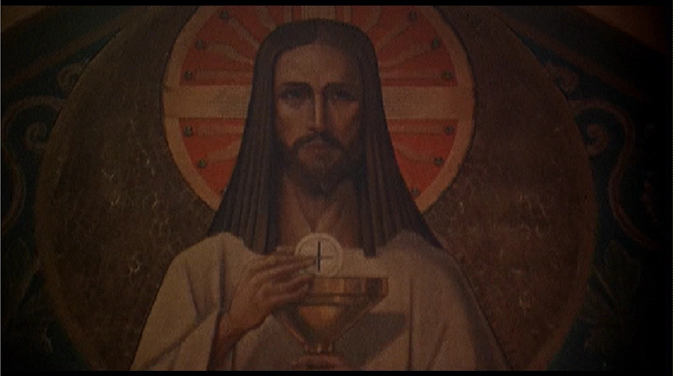
Figure 1:
Opening shot of Rocky: Christ above the boxing ring

Figure 2:
Rocky looks in the mirror, framed by childhood photos

Figure 3:
Hand on the dial: television interview of Rocky

Figure 4:
Before the fight
[The act of recognizing oneself in the mirror], far from exhausting itself, as in the case of the monkey, once the image has been mastered and found empty, immediately rebounds in the case of the child in a series of gestures in which he experiences in play the relation between the movements assumed in the image and the reflected environment, and between this virtual complex and the reality it duplicates-- the child's own body, and the persons and things, around him. [...]
We have only to understand the mirror stage as an identification, in the full sense that analysis gives to the term: namely, the transformation that takes place in the subject when he assumes an image-- whose predestination to this phase-effect is sufficiently indicated by the use, in analytic theory, of the ancient term imago.
This jubilant assumption of his specular image by the child at the infans stage, still sunk in his motor incapacity and nursling dependence, would seem to exhibit in an explary situation the symbolic matrix in which the I is preciptated in a primordial form, before it is objectified in the dialectic of identification with the other, and before langauge restores to it, in the universal, its function as subject.
This form would have to be called the Ideal-I [...]
Jacques Lacan, "The Mirror Stage as Formative of the Function of the I as Revealed in Psychoanalytic Experience," Ecrits, (first delivered in 1949)



